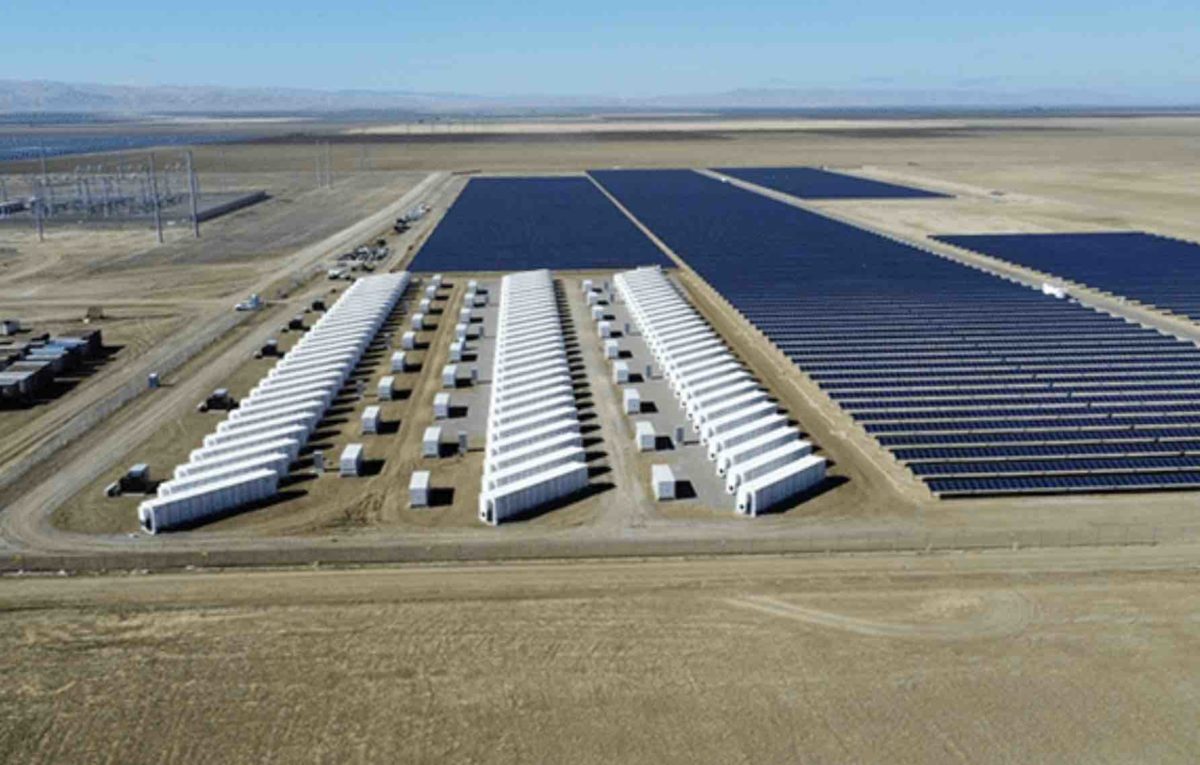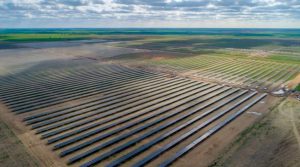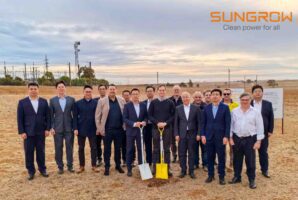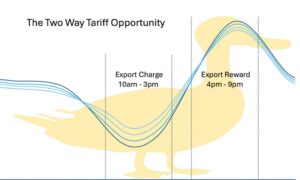The big influx of battery storage on the California grid in the past two years is starting to have a lasting impact on one of the world’s biggest state grids, reshaping the demand curve, sucking in the tummy of the huge solar duck, and reducing the impact and dominance of fossil gas.
What has been happening over the past few months in California – with battery storage pushing out gas as the major provider of power into the evening peaks, and soaking up rooftop solar in the middle of the day – is seen as a postcard for the future for many grids around the world..
It is of particular interest to Australia, which has also been investing heavily in battery storage – and leading the world in terms of battery size and applications – and which is also rich in solar resources and solar installations.
In Australia, however, many of the big batteries now operating in the market are performing specific and niche functions such as frequency control, network support, virtual transmission and trialling new markets such as grid inertia. And because of this, most of the big batteries only have a small amount of storage, between one and two hours.
That is starting to change, particularly in Western Australia, an isolated grid with a particularly high penetration of rooftop solar, which has contracted a huge amount of four hour big batteries (more than 1.4 GW and 5.6 GWh) to shift the output of solar from the middle of the day to the evening peak.
The federal government has embarked on the first of a series of massive auctions to secure another 9 GW and 36 GWh of battery storage capacity (although they are not limited to this technology). NSW has already contracted its first four hour battery, and even two eight hour batteries.
California, then, which has been mandating four hour batteries for the last several years – has sent us a postcard of what the grid – known in California as CAISO – starts to look like when these facilities are built.
As Renew Economy has reported on multiple occasions over the last few weeks, here, here and here, records for the share of renewables in California, minimum load, and battery output have been tumbling at regular intervals.

The staff at Grid Status, which provides an excellent data service monitoring the US grids in real time and the records that are tumbling around the nation, have published a fascinating article on the shifting trend in California, rather than focusing on a couple of new instantaneous peaks.
The graph above illustrates the average change in battery activity in April over the previous years. It shows that the average charging load has more than doubled in the middle of the day, and the average discharge back into the grid has also more than doubled in the evening demand peak, and pushed further into the evening.
The first impact to be noticed is the big load shift. One of the big topics of discussion for grid operators – in California and Australia in particular – is the growing solar duck, and the challenges it presents to marshall the resources that can respond quick enough to the impact of the rising sun, the setting sun and passing clouds.

The graph above shows the the belly of the solar duck, which had been growing inexorably over the six previous years, is now starting to flatten out (the green line for 2024), and the neck (representing the evening peak demand) is also being reduced.
This has been happening despite a big leap in the output of solar (see graph at the end of the article) both in average and instantaneous terms. Grid Status says there has been a step change in the output of solar in 2024 after several years of stagnating growth.
“Every one of the top ten instantaneous solar generation records in CAISO occurred in the final 3 weeks of April (before we hit May, which has already nabbed three of the spots),” it notes.
Before this streak, the peak output was barely over 16 GW in September of 2023. Now the record stands at more than 18.5 GW and is poised to keep growing.”
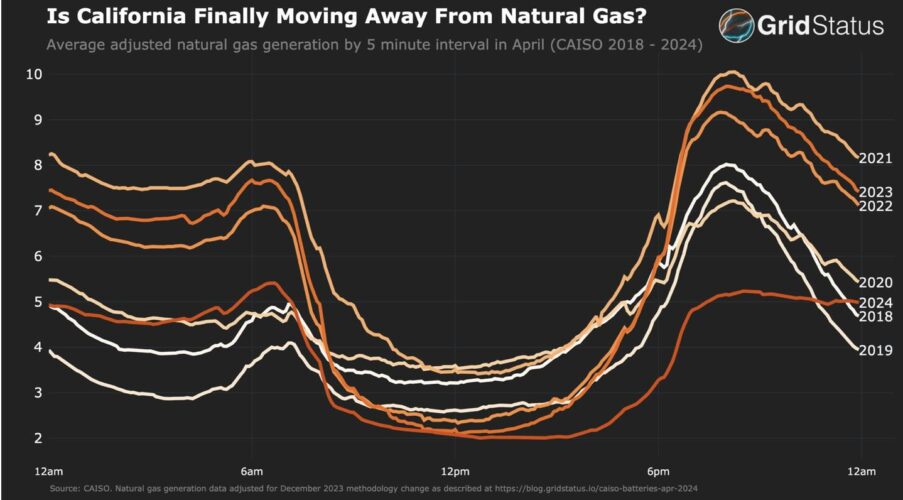
The second big impact is on gas fired generation, and is shown in the graph above. The average for the month of April shows that gas output has effectively halved in 2024 – both in the morning peak on the left and the evening peak on the right, as battery storage takes control.
“That is because batteries are assisting with the predictable, but large, swings in solar output each day,” the authors at Grid Status note.
“These rapid ramps have been largely managed by natural gas units to date, but now batteries are taking on much of that responsibility. The data clearly shows that batteries are displacing natural gas when solar generation is ramping up and down each day in CAISO.”
Grid Status notes that this has been occurring despite a halving in the price of gas from the local supply hub has more than halved in the past year from nearly $US9/MMBtu last April to just $4US/MMBtu.
“It appears that batteries charged on that same cheap solar during the day have been able to take control of the peak management from natural gas generators,” Grid Status writes.
“The shifting of this critical grid responsibility of handling solar ramps to a more responsive asset like batteries has important consequences. Because gas is no longer needed as much in the mornings/evenings, the amount held online during uneconomic midday conditions in preparation for evening solar down ramps can be reduced.”
And all this appears to have a circular virtue. Grid Status notes that the output of solar, as mentioned earlier, is vastly higher in 2024 than in previous years.

“While new solar capacity additions certainly played a role in elevating output, there are two other potential drivers at play,” it says.
- “With a reduction in the need for midday gas due to batteries, there is more room for solar generation to supply the wider grid. The increased midday demand from batteries can consume solar output that might otherwise get curtailed.
- fills the gap.
- “As batteries work synergistically with solar in multiple ways, CAISO (and really California’s) grid of the future seems to be taking a much clearer shape than in previous years.”
Grid Status concludes: “The key question going forward is whether this is indicative of a new reality in CAISO, or simply an outlier spring. While many elements point to this being a structural change largely driven by the increased presence of batteries, the grid is changing quickly and sometimes in unpredictable ways.
“Whether or not this progress is continued in the years to come, this spring will still stand as a shift, the first time California’s ugly duckling demand curve began to resemble the intended swan.”

